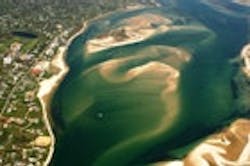EPA Designates Another Cape Bay ‘No Discharge Area’
The coastal waters of Pleasant Bay/Chatham Harbor now join all of Cape Cod Bay and most other coastal Massachusetts waters as a designated “No Discharge Area.”
The U.S. Environmental Protection Agency (EPA) approved a request by the Massachusetts Office of Coastal Zone Management (MA CZM) and the Pleasant Bay Resource Management Alliance to designate Pleasant Bay/Chatham Harbor as a no discharge area. This designation means that the towns of Chatham, Harwich, Orleans and Brewster are protecting their coastal water quality from boat sewage pollution by prohibiting the discharge of treated and untreated boat sewage in the water body.
“Protecting and enhancing the health of our environment is a core foundation of vibrant and prosperous communities,” said Curt Spalding, regional administrator of EPA’s New England Office. “Especially on the Cape, where people vacation year after year, clean coastal water means more tourists visiting our towns and supporting our economy. Clean coastal water on the Cape means great beach days, bountiful shellfisheries and a resilient tourist economy.”
EPA worked closely with state and local officials, and conducted site visits to the area to determine whether there were sufficient pumpout facilities to serve the boating public.
This particular area has an estimated 2,160 boats, of which 124 are large enough to have a Ahead@ or toilet on board. There are three marinas, several yacht clubs and public boating facilities in the area, and a total of three pumpout facilities in the area. The designation was formalized on July 2 when EPA published the determination in the Federal Register.
The protected area is roughly 9,000 acres and is classified as an Area of Critical Environment Concern. The islands of Pochet, Sampson, Hog, and Little Sipson Islands are held in trust; Strong Island is owned by the town of Chatham and the Chatham Conservation Foundation; and Tern Island is owned by the Massachusetts Audubon Society. The Nauset Barrier Beach is within the boundaries of the Cape Cod National Seashore. The Bay is home to 36 finfish species and an abundance of quahogs, softshell clams, razor clams and scallops. This area is a popular destination for boaters due to its natural environmental diversity.
Boat sewage can lead to health problems for swimmers, closed shellfish beds and the overall degradation of marine habitats. Adding Pleasant Bay/Chatham Harbor as a “no discharge” area increases the significant portions of New England’s coastal waters that now prohibit boat sewage.
Source: U.S. Environmental Protection Agency
